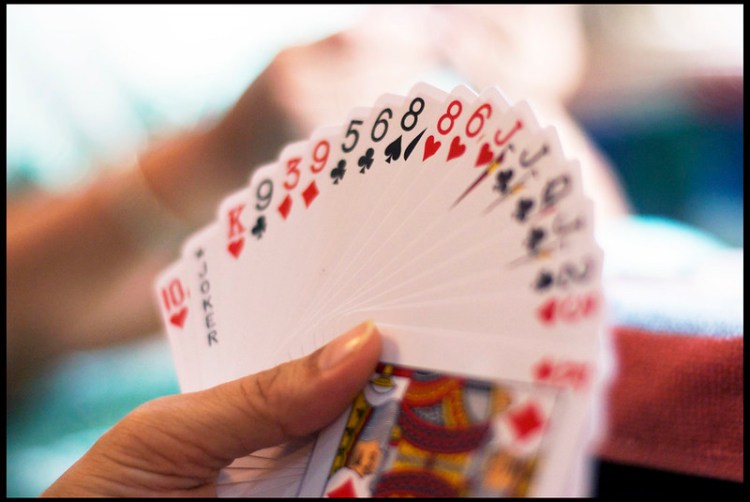If you’re a regular frequenter of virtual casinos in 2022, you’ll know that most games’ libraries are dominated by slots and various iterations of blackjack and roulette.
Evolution of Card Playing Throughout the World

Evolution of Card Playing Throughout the World
If you’re a regular frequenter of virtual casinos in 2022, you’ll know that most games’ libraries are dominated by slots and various iterations of blackjack and roulette.
While the best online casino platforms are also dominated by table games, there remains a special and popular niche for poker (and similar card games) within the iGaming marketplace.
In this article, we’ll discuss the history of playing cards across the globe, while asking how poker has evolved to maintain such a cult following of fans.
The Origin of Playing Cards
We’re probably all familiar with card games of various descriptions, with the modern deck of 52 cards iconic and well-known throughout the world.
However, the deck and rules used today are far-removed from their historical iterations, with the pastime of playing cards having undergone a significant transformation since their origins centuries ago.
Interestingly, the origin of playing cards remains a subject of intense and fierce debate. What we do know is that clear historical evidence exists of cards being played throughout Europe during the late 1300s and early 15th century.
However, many argue that (like most things that have been appropriated and popularised by western culture) that card games actually originated in the East, before being imported to the continent by crusaders, merchants and Romani.
Of course, educated guesses have been made about the suits and icons that adorned the world’s most formative card decks. More specifically, many of the early designs, suits and icons of the 12th century have links to the Far East, particularly regions such as China, India and Korea.
Some scholars have even suggested that the notion of playing cards and rudimentary decks were invented in China during the Tang Dynasty around the time of the 9th century AD. This would trace the origins of card playing back to around 1000 AD, way before the practice was popularised in Europe.
The Development of Playing Cards Through Different Cultures
The decks of the late 14th century began to resemble those that we know and love today, typically featuring a seated king, a seated and crowned queen and a knave. The knave would be a royal servant, with this character later evolving into a ‘prince’ and latterly a ‘jack’ to avoid confusion with the king icon.
By the arrival of the 15th century, the French had further developed the icons for the four suits that we commonly use today, namely clubs, diamonds, hearts. Interestingly, they also took the decision to divide the four suits evenly into red and black, creating more clearly defined symbols and simplifying the production process considerably.
These familiar and high quality decks were subsequently produced in much greater quantity, flooding into Belgium and the UK and across the west of the continent in the process.
New card game iterations were created at this stage too, with ‘bridge’ having originated in England during the formative 16th century.
While playing cards was an incredibly popular pastime in Europe by the 16th and 17th centuries, it’s fair to say that North America was late to engage in this particular evolution. This is because the region was largely colonised by the UK at the time, making the US completely dependent on Britain for its imports.
However, playing cards began to appear in the US in the early 19th century, with many early American manufacturers printing the word ‘London’ onto their decks due to their customers’ penchant and preference for British-made goods.
US publisher Lewis I. Cohen became a leading publisher of playing cards around 1832 stateside, while three years later he invented a machine for printing all four colours of the card faces at once. The decks produced here are the closest to the ones we use today, both in the UK and throughout the western world.
We should also note that while the US was late to embrace card playing as a popular pastime, the region is responsible for developing the now iconic game of poker during the early and mid-19th centuries.
Given that this remains the most popular card game in the world (particularly from an online gambling perspective), North America has clearly made a huge contribution to card playing in a relatively short period of time.
The Bottom Line
More recently, the concept of playing cards has undergone further transformation, with the emergence of social and online gambling and virtual iterations of poker, craps and similar titles.
No matter which way you turn, however, poker remains the most widely played and seminal card game in the world. Poker is also a staple on the best live online casino platforms, with a wide range of real-time tournaments and competitions available to players.
This is despite the fact that online poker now accounts for just 5% of the total online GGY in the UK, having been overtaken by video slots and creative iterations of beloved table games.
Regardless, poker iterations and similar card games retain a cult following online, while the broader pastime of playing cards remains culturally relevant and popular in all four corners of the globe.
Image Credit: Flickr








